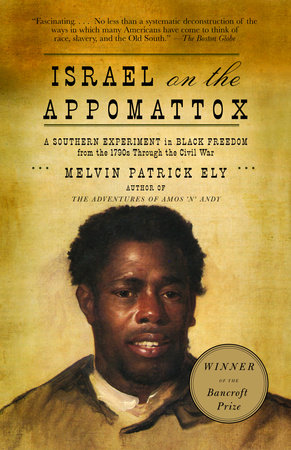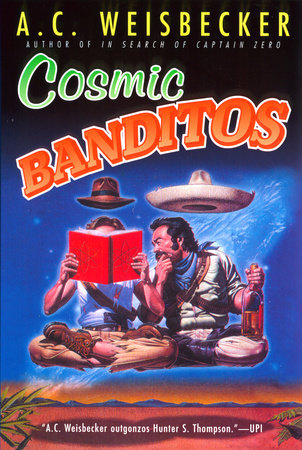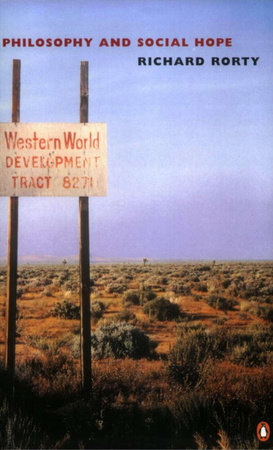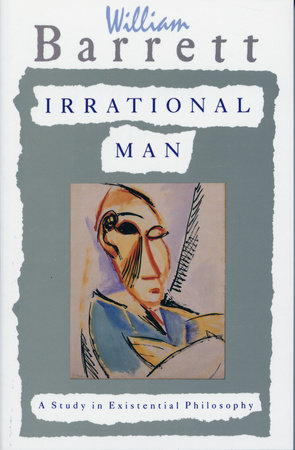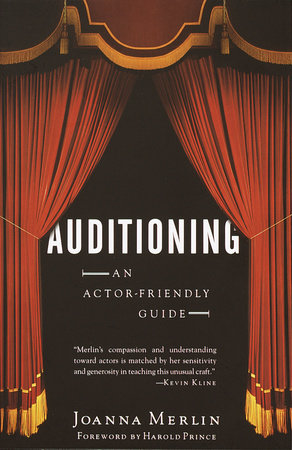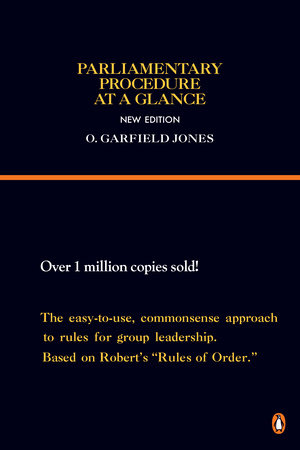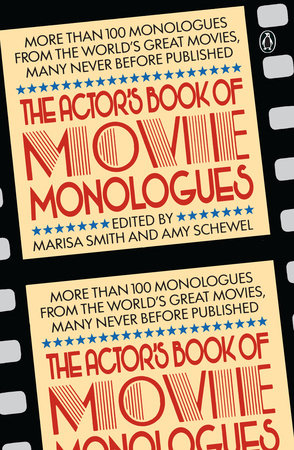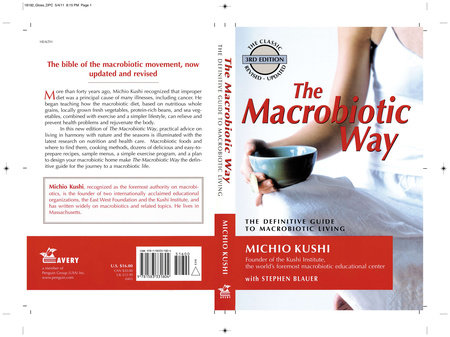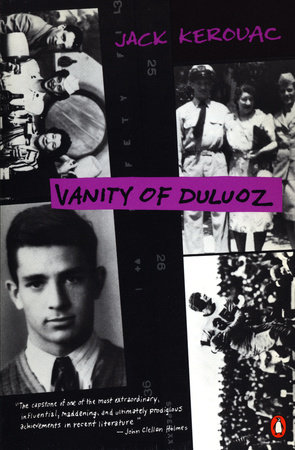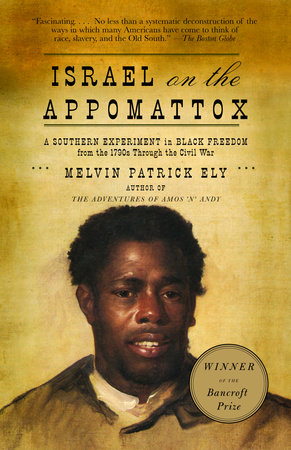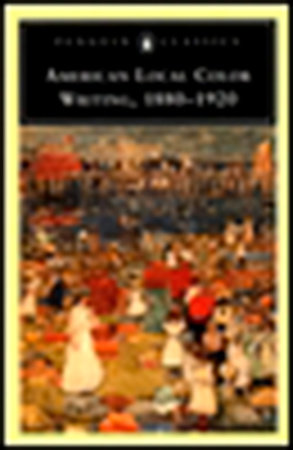Author Q&A
A Conversation with Melvin Patrick Ely
Q: How did you first find out about Israel Hill, a now-forgotten settlement of free African Americans that not even their own descendants remember well today?
A: Years ago, thumbing through an old history textbook, I came across a single sentence mentioning a Virginia planter named Richard Randolph. The book noted that, in the 1790’s, Randolph decided that his many slaves should go free and receive part of his plantation to settle on and build new lives; the freedpeople named their community Israel Hill. I knew that others, including George Washington, left wills liberating slaves, but the idea of granting land to emancipated black folk was very unusual. I wondered what it was like for newly freed African Americans to live alongside their fellow blacks who remained in slavery, and how they managed to make their way in a society dominated by whites, many of whom were slaveholders.
Q: What kind of person did you find Richard Randolph to be?
A: Richard “Dick” Randolph is actually relatively well-known because he was reputed to have impregnated his wife’s live-in sister and then to have helped her either abort or kill their baby. When Randolph appeared before the county court to try to clear his name, he was represented by a legal “dream team” that included Patrick Henry and future chief justice of the Supreme Court John Marshall. While he never faced formal charges, his reputation remained clouded, and three years later, he was dead at the age of 26.
But Randolph was notable for another reason, too. He had imbibed the Revolutionary doctrine that all people are endowed with the right to life and liberty. He was a dyed-in-the-wool moralist, and that principle meant to him that holding people in slavery was immoral. That’s why he wrote a will that called for his slaves to go free and receive land. (He claimed he would immediately have freed all the slaves he inherited, except that his father had presented them as collateral for loans that had yet to be paid; as long as that was true, it was illegal to liberate those enslaved people.)
Q: Many Virginia planters cherished the ideas of the Enlightenment thinkers, but Richard Randolph was one of very few white eighteenth-century Americans who thought of African Americans as "our fellow creatures, equally entituled with ourselves to the enjoyment of Liberty and happiness." If Randolph was capable of this thought, why, in your opinion, were so few others?
A: More than a few whites of the Revolutionary generation accepted the abstract idea that all people are created equal. But not many were ready to accept the full implications of that thesis. The economy of the South depended on slavery; none other than Patrick Henry–who had once shouted, “Give me liberty, or give me death!”–explained frankly that whites held onto slavery because it was so “convenient.”
Then there was the issue of where African Americans would go if they were liberated. Randolph’s cousin, Thomas Jefferson, suspected that blacks were racially inferior to whites, and he believed that the hostility built up between whites and blacks through decades of slavery would make it impossible for them to live together in freedom.
Like Jefferson, Randolph studied at the College of William and Mary under George Wythe, one of the few white Southerners who seems to have believed wholeheartedly in the doctrine of human equality. Wythe himself raised a boy of color virtually as his own son, taught him Latin and Greek, and wrote a will leaving the young man a large part of his estate. Randolph idolized George Wythe and was deeply influenced by his example. (I should note in passing that years afterward, Wythe paid with his life for his racial liberalism; the old man’s nephew, jealous of Wythe’s “colored” heir, used poison to kill both of them.)
Q: How did the lives led by Randolph’s liberated slaves differ from the lives of white people in the same community?
A: For one thing, the black people on Randolph’s plantation had to struggle for fourteen years simply to obtain the liberty he had wanted them to have. Because of financial tangles, the “convenience” of keeping people enslaved, and sheer inertia, Randolph’s widow Judy only got around to freeing his slaves–ninety-some in number by then–in 1810. During that long purgatory, the black folk on the plantation protested and even demanded their freedom, but I suspect they didn’t want to push too hard for fear of alienating their mistress and aborting their own emancipation.
Once liberated, the Randolph freedpeople, like all blacks who attained their freedom while slavery still prevailed in Virginia, were denied the right to vote, to serve on juries, or to join the militia. According to the law, free blacks had to get special licenses to carry guns, and were barred from owning firearms at all after 1831. In some years, free African Americans had to pay a fairly heavy “special tax” that applied only to them; if they didn’t pay, then the sheriff had the power to hire them out to whites to work off their tax debt.
Free blacks in Virginia were not forbidden to learn to read and write, nor whites to set enslaved people free, as Randolph had done–but lawmakers set up serious obstacles to both. No black person, free or enslaved, could testify against a white defendant in court. Most liberated blacks, unlike those of the Randolphs, began their life in freedom with few possessions; many remained in poverty. And they had to listen as proslavery propagandists slandered them by saying that free blacks led degraded lives and would have been better off had they remained in bondage.
In short, free Afro-Virginians–like free blacks elsewhere, North and South–were defined as second- or third-class citizens.
Q: If all that is true, how did you come to the conclusion that black and white people in Prince Edward County, where Israel Hill is located, treated each other with more respect than is commonly thought to have been possible in the Old South? After all, you write that "the realities of daily life led whites in Prince Edward to admit the humanity of blacks routinely in myriad ways. And blacks, free and slave alike, successfully laid claim to rights and considerations that the theory of racial slavery denied them."
A: Free Afro-Virginians did have some important rights. They could own real estate and personal property without limit, and bequeath it to their children. They could sue white people in court. I examined dozens of boxes of local court records, and I found free black men and women doing precisely these things, seemingly without fear or hesitation. It was not unusual for a black person to defeat a white person in court, or to defend him- or herself successfully against a criminal charge (of which there weren’t many, because free blacks were a very law-abiding group).
The records I looked at revealed free blacks and whites doing lucrative business with one another, working side by side for equal wages, joining forces to found a Baptist congregation, moving west together, and even settling down as man and wife. The accomplishments of some free Afro-Virginians–buying boats and lots, erecting buildings, selling at profit, winning respected places in the community–were formidable, and most whites did little or nothing to block their path to success.
Some of the cultural similarities between whites and blacks in old Prince Edward County were striking, too. One of the most enjoyable parts of researching Israel on the Appomattox was collecting phonetic dialect-spellings from documents written by half-educated whites and using them to reconstruct the local dialect. White speech was remarkably close in many particulars to the way black Virginians spoke.
Much of Virginia, and of the Old South in general, operated on two levels when it came to free blacks. The reigning white ideology proclaimed that the only status appropriate for African Americans was that of slaves. But many whites found it more pleasant and convenient to relate to blacks in a civil manner in day-to-day practice, and to let most of the anti-free black laws go unenforced most of the time.
Q: Did any of this surprise you?
A: I knew some of these things before, but the extent of black-white cooperation and the myriad forms it took did catch me off guard. If anyone had been watching me in the archives as I did my research, I suspect they would have seen my brow wrinkle in surprise fairly often.
Historical accounts up to now have concentrated, understandably, on the oppression free African Americans faced in the Old South. Some important historians have drawn the conclusion that whites treated free blacks much as they did slaves, and that most free people of color were fortunate if they managed simply to survive. I find a much wider repertoire of white-black interactions than those writers do. I think that’s partly because they look more at laws and the writings of editorialists and ideologues, while I try to zero in on the way local people actually behaved from one day to the next.
The part of Israel Hill’s story that surprised me less was that free African Americans achieved so much economically and socially. As a longtime student of black history, I knew that black folk had managed to achieve remarkable things in every era even though there was never a time when the odds favored them.
I should mention that I was born in the segregated South, so I was very familiar with the phenomenon of white people dealing civilly with blacks one-on-one even as those same whites played their part in a racially oppressive system. The real surprise was that I found an even greater range of black-white interaction in the Old South than I recalled from my childhood–and especially, a greater degree of physical contact between the two races.
Q: What kind of physical contact?
A: I found white and black folk sleeping in the same room, applying ointments and other medical treatments to each other’s bodies, drinking liquor and playing cards with one another, and having sex together, sometimes in lifelong spousal relationships that produced large families.
Q: Do you think that Prince Edward County was an anomaly in the ways black and white people interacted?
A: Actually, studies of other communities suggest that most of what I’ve found occurred in lots of other places. As for interracial sex and the rearing of families, a recent book by Josh Rothman documents the same patterns of black-white sexual contact, and tolerance for that contact, throughout Virginia that I find in Prince Edward County.
In Israel on the Appomattox I take what I think is a new approach by looking into every aspect of life in a particular community and piecing together an overall picture of free black life, slave-master relations, and black-white contact generally.
Q: Is there any evidence to suggest that the slave-holding, white landowners whose land adjoined the Israel Hill plot protested the settlement of free black people in such close proximity to their slaves?
A: Little to none, which is especially significant as the Israelites’ next-door neighbors were among the wealthier and more influential white planters in the county. Proslavery propagandists who wrote for publication proclaimed that the people of Israel Hill were a constant nuisance to nearby whites. In fact, the court records show those whites complaining about each other from time to time, but not about the black Israelites. The one partial exception is an early case in which a young man from Israel Hill was charged with receiving stolen corn from the slave of a white neighbor. But the court acquitted the black defendant after whites from the neighborhood testified, apparently to his benefit. A couple of white landowners who lived near Israel Hill conducted business with the Israelites; one administered the estate left by Phil White Sr., who was a founding father of Israel Hill.
Q: Did any specific residents of Israel Hill particularly impress you?
A: Yes. Hercules White was deeply admired both by the Randolphs and by his fellow blacks. Early in the nineteenth century, even before he became officially free, White was advancing himself economically–plowing fields, hauling cargo, slaughtering hogs, carpentering, coopering, growing corn and tobacco. As a free man, Hercules White didn’t hesitate to sue a white man for an overdue debt; when he died, he left behind considerable property, and white and black men alike owed him hundreds of dollars. The White family became the most successful on Israel Hill and in the neighboring town of Farmville.
Syphax Brown had been the valet of Richard Randolph and of his stepfather and father before him. Our stereotype of the house servant is of a person who maintained his privileged position by kowtowing to whites. But when Syphax Brown became a free person and a white man shot some of Brown’s hogs, he took the offender to court and won substantial damages.
Three other black Israelites, Sam, Phil, and John White, bought and sold thirteen lots and part-lots in Farmville, some of which they built on and earned large profits. Sam and Phil, along with two dozen white citizens, became founding members of the town’s first Baptist church. They began life as other people’s property, but they became proprietors on a large scale.
Q: How did you piece together the personalities of these free African Americans from the limited written record they left behind?
A: I found perhaps ten sentences written by free African Americans themselves over a period of sixty years. But I did find box upon box of court records. In many civil suits, a plaintiff filed a long narrative of his or her grievance against another person, and then the defendant responded at equal length; sometimes additional people gave depositions or affidavits. Litigants also submitted store accounts that tell you what people consumed, documents that show what they earned and spent, and other revealing items.
Although some of this material comes through the filter of attorneys, we still have free black folk telling their stories, sometimes in vivid language, and white people talking about African Americans. If you dig long enough, I believe you can find windows into the minds and souls of people–whatever their color–who never wrote a word in their lives.
Q: In Israel on the Appomattox, you challenge the firmly established notion that poor whites were more antagonistic toward free blacks than any other social group. How did you arrive at this conclusion?
A: The “better sort” of white Southerner has always tended, conveniently, to blame the most repulsive features of southern life on the “poor white trash.” What I find instead is a spectrum of racial behavior–ranging from hardline to open-minded–among the privileged and also among whites of modest means. One slaveless white man bought expensive gifts for an enslaved woman whom he identified to a friend as his “sweet heart.” A number of white women of simple origins bore children by black men and raised them to adulthood. One impoverished white woman championed her nephew, a boy of color, when he found himself apprenticed to an abusive master craftsman. Simple whites sometimes entertained and played cards with free or enslaved blacks. One white man of modest means frequently received an enslaved friend into his home; when a white female neighbor gossiped about the arrangement, the white man and the slave teamed up to cut the woman’s throat.
Q: What was the practice of "processioning," and what effects did it have on relations between black Israelites and their white neighbors?
A: Processioning was an ancient custom whereby every few years, two men in each neighborhood would walk the boundary lines of all the landed property in their bailiwick to clarify where one person’s tract ended and the next person’s began. The landowners on either side of a given boundary had the right to accompany the processioners, and free African American landowners such as the Israelites regularly made use of that right. It was a way of asserting their status as people who owned ground of their own, and the white processioners don’t seem to have found it odd that blacks would do that.
Processioning also tended to blur distinctions of class and even of race as, regardless of social standing, every man involved had to hack his way through underbrush and risk getting his shins bruised. Then too, processionings were often accompanied by gossip and banter–and, I suspect, by liquor (it was a heavy-drinking society).
Q: Besides farming the land on Israel Hill, what trades were common among Israelites and other free black people in the area? Were they paid the same wages as whites who practiced these trades? Did white planters tend to employ primarily white tradesmen?
A: Free black people worked as carpenters, coopers, shoemakers, brickmasons, ditchers, millers, wagon-drivers, boatmen, midwives, farm laborers, spinners, weavers, knitters, seamstresses, and clothes washers. Some worked as servants to white people, but nowhere near as many as we might tend to think. The plantation records I’ve seen suggest that, at least when it came to skilled trades, planters hired whomever they thought would do the best job, regardless of that person’scolor. The exceptions are the positions of overseer or of supervisor in a tobacco processing plant, where I don’t find blacks being hired.
Free blacks often earned the same wages whites did. Wheat harvesters of both races worked side by side, and both earned a dollar a day–very good money in old Virginia. Hercules White seems to have gotten the same money for barrels and hogsheads he made as white coopers did. Both black and white women worked as midwives, and the fees they earned depended mainly on the status of the client rather than on the color of the midwife.
It is essential to remember, however, that most black workers were not free people like the Israelites, but rather slaves whom the employer either owned directly or hired (rented) from someone else. The fee for hired slaves might be the same as the wage for whites or free blacks, but of course most or all that money went to the master of the enslaved person. Many slaves were allowed to earn some money on their own time, but we must never forget that on the whole, this was a system that extracted unremunerated work from enslaved black people who had no choice in the matter.
Q: Did the free African Americans of Israel Hill and vicinity have much contact with fellow blacks who remained in slavery?
A: Yes, and sometimes with heartbreaking results. Several of Israel Hill’s first settlers, though free, were married to people who remained in bondage. At a minimum, this meant living apart from one’s spouse. But the results could be far more traumatic even than that. Tony White, one of Hercules’ sons, married an enslaved woman; the couple had to watch, powerless, as the white master who owned three of their children moved to Missouri and took the young ones with him. A free black miller named Phil Bowman likewise had an enslaved wife, named Priscy; when her master failed financially, the sheriff confiscated and sold off the man’s property, including Priscy, and Phil Bowman had to bid on his own wife at a public auction. (With a loan from his white employer, Bowman succeeded in buying Priscy.)
At the same time, there were free blacks who actually bought slaves. Many who did so were in fact liberating family members, but a few, both on Israel Hill and off, actually worked slaves whom they hired or purchased from others, at least on a temporary basis.
Q: What were batteaux and how were they significant in the Israel Hill community?
A: Boating cargo up and down the Appomattox River between Farmville and Petersburg became the occupation for which men of Israel Hill and other free blacks were best known. These men did their work in a remarkable kind of vessel called a “batteau,” which was fifty or sixty feet long, but only six feet wide and two feet deep (the river is pretty narrow, and shallow in spots). The batteau’s relatively flat bottom allowed boatmen to load five to seven tons of cargo (often tobacco or wheat) and still float their boat in a mere two feet of water; in a pinch, even twenty inches would do.
Two men poled the batteau during its voyage upstream, while a third–the captain or “headman”–guided the boat with a steering oar at the stern. White men, free blacks, and enslaved men all worked both as captains and as crew, and men of both races sometimes, perhaps often, voyaged together. Yet it was the black boatmen who became legendary as practitioners of what one white author called “truly a man’s job, demanding skill, courage, and strength to a high degree.”
Q: How did white propagandists depict Israel Hill in their pro-slavery smear campaigns? Were these campaigns effective?
A: Most white Virginians at least passively accepted slavery as a given. Many depended on the institution, both economically and socially. Then there were those who actively defended bondage as the best possible system, for blacks as well as whites. That last group became more and more vocal as Northern criticism of slavery mounted. Those who wanted to prove slavery was good for both races felt they had to demonstrate that freedom would turn black people into helpless paupers, criminals, and parasites. Richard Randolph’s argument that the races were equal and that blacks could achieve success as free people, if proven correct, would refute the whole idea of slavery as a positive good.
So prolavery propagandists proclaimed Israel Hill a definitive experiment in black freedom, and they declared it a complete failure. The first generation of free blacks born on the Hill, they said, had turned into poverty-stricken, disease-ridden thieves, prostitutes, and layabouts. These things were not true and in fact, a number of people in the community had prospered, but some whites who wanted their racist convictions confirmed were all too ready to believe the slander. These misrepresentations of Israel Hill were eventually published across the United States, from New York to New Orleans. Israel Hill, a product of the first American Revolution, became a political football in the conflict that led to the second–the Civil War.
Was the propaganda against Israel Hill effective? I see no evidence that it altered day-to-day life on the Hill, or interactions between free blacks and whites in Prince Edward County. Did these stories change the minds of any waverers in the North? I don’t know; there was a sea of pro- and antislavery propaganda engulfing the landscape. I do believe the smear campaign against Israel Hill was designed partly to persuade those white Southerners who had inner doubts about the morality of slavery that their worries were misplaced.
Some of the published smears were still being quoted as fact by historians well into the twentieth century, and I’ve run into people who refer to them as gospel even today. One of the pleasures in writing Israel on the Appomattox has been the opportunity to paint what I hope is an accurate picture of what Israel Hill actually was.
Q: What happened to the Israelites and other free blacks during and after the Civil War?
A: Many free black men were drafted to do manual labor for the Confederate Army. Some worked near home, but a number were sent to faraway parts of Virginia to build fortifications. After the war, in 1867, African American men received the right to vote and hold office. No black Israelites were elected to public office, but free blacks on and off the Hill had bought more real estate than ever before during the 1850s and 1860s, and African Americans played a growing role in the post-Civil War economy of the area.
Q: The first Baptist church in Farmville was founded by a biracial group that included Sam and Phil White, prosperous free blacks of Israel Hill. How was such a thing possible in a white supremacist society, and how was this joint venture viewed by non-Baptists in the community?
A: Here again, the Old South was a society of paradoxes. Churches in the region seated blacks and whites separately; that sometimes meant that black worshipers had to stand along the walls or even outdoors. At the same time, every church in and around Prince Edward County was biracial; white evangelical Christians of all denominations recognized the validity of black members’ conversion experiences and spiritual gifts, as well as their capacity for salvation. Few people seem to have thought less of Farmville’s Baptist congregation because its founders included free blacks; white non-Baptists contributed money toward the building of the church.
Q: How does Prince Edward County’s reaction to Brown v. Board of Education (i.e. closing public schools for years rather than allow integrated education) fit with your revelations about the earlier fluctuations of racial attitudes in Prince Edward?
A: I’ve thought a lot about that. As Israel on the Appomattox doesn’t cover the century between Emancipation and the Prince Edward school closings of 1959, I’m reluctant to trace the deep roots of the desegregation crisis of the 1950s and 1960s.
But I will say a couple of things. First, in Israel on the Appomattox I show that the African American community in Prince Edward County has been a creative and impressive one for many, many years. That held true in the mid-twentieth century, and it helps explain why black high school students in the county staged a protest against unequal schools, which in turn led to a desegregation suit that was one of four that the U. S. Supreme Court decided in Brown v. Board of Education.
The second thing I’ll say lies at the very heart of Israel on the Appomattox. Historians have long written that whites in the Old South saw free African Americans as walking contradictions to the logic of slavery, and therefore treated them almost as badly as they did enslaved people. I agree that free blacks were oppressed, but I’ve found that they interacted with whites in a stunning variety of ways. It seems to me that slavery ironically helped make such flexible relations possible: before the Civil War, most blacks remained securely in bondage, and that left many whites feeling that decent relationships with and accomplishments achieved by free African Americans posed no threat to white supremacy.
In the 1950s, whites in the South had no such assurance. Indeed, national institutions seemed more and more sympathetic to the black struggle against segregation. Under those conditions, whites circled the wagons and resisted integration in every way short of secession and armed rebellion against the federal government (which had been tried in 1861-1865 and turned out disappointingly). Why Prince Edward of all counties in the South decided simply to abolish public education is a story Bob Smith told effectively in the 1960s through his book, They Closed Their Schools.
Q: Is there anything left of Israel Hill today?
A: There are still a few African American families who live there, at least one of which consists of descendants of the early settlers. But over the last three generations, many Israelites left to seek opportunities in Baltimore, New York, and elsewhere. The Hill’s population is very small today, and much of the area is now wooded.
During my work for Israel on the Appomattox, I did have the privilege of interviewing people who grew up on Israel Hill early in the twentieth century. I conducted one of those interviews with Ms. Pearl Walker Hartwill, in her family home on the crest of Israel Hill–a memorable experience. My job as a historian is to find the truth without romanticizing anything, but I won’t deny that I feel a connection both to the Israelites and to some of their white neighbors, or that, after years of research and writing, Israel Hill has a permanent place in my heart.
